Photo 01: Crew members prepare to board their Ju 88A-5/U through the open under fuselage-hatch. The upper FuG 200 radar antenna masts are in place although the aerials have not been fitted. A recent conversion, this A-6/U still retains the factory code Stkz PN+MT used for test and delivery flights. The upper surfaces are camouflaged with an RLM Gray (02) or Light Blue (76) wave pattern over Dark Green with Black Undersurfaces.
Geschwader Stab Kampfgeschwader 76 - Geschwader Stab./KG76
I. Gruppe Kampfgeschwader 76 - I./KG76
Profile 00: The Ju 88C-6 of I./KG76 based at Catania in Sicily during early parts of 1943. It has a dark green (probably RLM 71) sprayed over its pale blue (RLM 65) and finished in a 'scribble' pattern. The white tail band was carried by most units operating in the Mediterranean theatre.
Photo 01: The Ju 88C-6 of I./KG76 based at Catania in Sicily from December 1942 to March 1943. It has a dark green (probably RLM 71) sprayed over its pale blue (RLM 65) and finished in a 'scribble' pattern. The white tail band was carried by most units operating in the Mediterranean theatre.
Stab III. Gruppe Kampfgeschwader 76 - Stab III./KG76
Photo 01: This rare colored photograph shows a Ju 88A-4 of III./KG76 coded (F1+DD) in flight over Crimea. The spinner tips have been painted in the three colors of white, red, and yellow representing each of the Staffel colors of the Gruppe
2 Staffel I. Gruppe Kampfgeschwader 76 - 2./KG76
Photo: Junkers Ju 88 A "F1+EK" of 2./KG 76, Italy 1943/44, Besatzung (crew) of pilot Lt. Lieseke (second from left)
3 Staffel I. Gruppe Kampfgeschwader 76 - 3./KG76
 4. Staffel II. Gruppe Kampfgeschwader 76 - 4./KG76
4. Staffel II. Gruppe Kampfgeschwader 76 - 4./KG76
Photo 01: being refueled showing WNr 4339
Profile 00: A late production Ju 88A5 of 4./KG76 based in Russia during 1941. Eastern Front identification markings consisted of a Yellow fuselage band and Yellow wing tip undersurfaces.
Photo's 01-02 : This Ju 88A -4, F1+MM of 4./KG76, ended up on its nose during the opening phase of the Russian campaign in summer 1941. The bombs in crates in the foreground and the special crane at the rear of the aircraft suggest that the incident happened on the perimeter of an airfield. If the aircraft had landed away from an airfield, ropes would probably have been used to pull its tail to the ground. Beneath the aircraft's cockpit is the Staffel emblem, which was designed during operations against England. It shows a British duck with Tommy helmet and umbrella in the crosshairs of a German gunsight. Our photos provide further proof that 4./KG 76 retained the duck emblem even after the start of the Russian campaign. The aircraft's propeller spinners bear a ring in the Staffel color white. The variations in width suggest that the rings were applied by hand. The aircraft letter is black outlined in white. Also noteworthy is the repetition of the last two letters of the aircraft code (MM) in white on the fin (see Photo 02).
Photo 01: During the Winter of 1942-43, 4./KG76 painted false bomber' noses on their Ju 88C-6s to trick Soviet pilots into making head on attacks. F1+XM also carries the Staffel Insignia of an enemy 'duck' within the cross hairs of a gun sight. (Bundesarchiv)
Photo 02: The under fuselage FuBI2 antenna on this Ju88C-6 was housed in a semi-transparent Plexiglas cover. The small bulb behind the rack antenna is a White navigation light. The aircraft carries temporary White camouflage which was typical for Eastern Front aircraft along with the Yellow fuselage band. (Bundesarchiv)
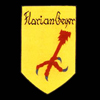 |
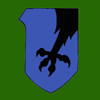 |
5 Staffel II. Gruppe Kampfgeschwader 76 - 5./KG76
6 Staffel II. Gruppe Kampfgeschwader 76 - 6./KG76
7 Staffel III. Gruppe Kampfgeschwader 76 - 7./KG76
Profile 00: The Ju 88A-4 of III./KG76 coded F1+BR based at Armawir in Russia from October to November 1942. They had a temporary white finish applied for winter operations in Russia when they moved to Athens-Tatoi to support Rommel's defense of North Africa. They were commanded at this time by Hptm. Heinrich Schweikhardt.
Photo 01: The Ju 88A-4 of III./KG76 coded F1+BR based at Armawir in Russia from October to November 1942. They had a temporary white finish applied for winter operations in Russia when they moved to Athens-Tatoi to support Rommel's defense of North Africa. They were commanded at this time by Hptm. Heinrich Schweikhardt. From looking at the photo and seeing the icy Russian conditions to being moved to Athens would have been like receiving a huge Christmas present. Seen at the front of the aircraft are the pipes from the combustion heater unit.
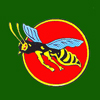 |
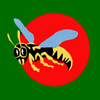 |
8 Staffel III. Gruppe Kampfgeschwader 76 - 8./KG76
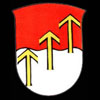 9 Staffel III. Gruppe Kampfgeschwader 76 - 9./KG76
9 Staffel III. Gruppe Kampfgeschwader 76 - 9./KG76
Junkers Ju 88 A-1 9./KG76 (F1+BT) and (F1+AT). The aircraft in the background, with the light coloured letter 'A', if from the same Staffel and unit, would have been F1+AT, with the 'A' in yellow. From 'Bomber Units of the Luftwaffe 1933-1945 - Vol.2' (Classic) by de Zeng and Stankey, it appears that III.Gruppe, KG76 - comprising 7., 8. & 9.Staffel - used the Dornier Do17Z until around December 1940, when personnel removed to Illesheim, Germany, on leave and then spent the next three months until March 1941 converting to the Ju88. After conversion on the Ju88A-5 was complete, III./KG76 relocated to Châteaudun during the first half of March, 1941. The Ju 88 was flown from Chateaudun Aerodrome, South of Paris, on the night of the 12th of March 1941, to attack the docks at Birkenhead, Liverpool. The Pilot was Feldwebel Guenther Unger. The aircraft caught fire and was abandoned shortly after dropping it's bombs, and later crashed.
Junkers Ju 88 A-1 9./KG76 (F1+BT) and (F1+AT). The aircraft in the background, with the light coloured letter 'A', if from the same Staffel and unit, would have been F1+AT, with the 'A' in yellow. From 'Bomber Units of the Luftwaffe 1933-1945 - Vol.2' (Classic) by de Zeng and Stankey, it appears that III.Gruppe, KG76 - comprising 7., 8. & 9.Staffel - used the Dornier Do17Z until around December 1940, when personnel removed to Illesheim, Germany, on leave and then spent the next three months until March 1941 converting to the Ju88. After conversion on the Ju 88 A-5 was complete, III./KG76 relocated to Châteaudun during the first half of March, 1941. The Ju 88 was flown from Chateaudun Aerodrome, South of Paris, on the night of the 12th of March 1941, to attack the docks at Birkenhead, Liverpool. The Pilot was Feldwebel Guenther Unger. The aircraft caught fire and was abandoned shortly after dropping it's bombs, and later crashed.
Luftwaffe pilot Walter Nowotny 258 kills
Luftwaffe pilot Theodor Weissenberger 208 kills
Luftwaffe pilot Heinz Bar 175 kills
Luftwaffe pilot Franz Schall 133 kills
Luftwaffe pilot Rudolf Rademacher 126 kills
Luftwaffe pilot Adolf Galland 104 kills
Luftwaffe pilot Hermann Buchner 58 kills
Luftwaffe pilot Erich Hohagen 50 kills
Luftwaffe pilot Rudolf Sinner 39 kills
Luftwaffe pilot Ernst-Wilhelm Modrow 32 kills
Luftwaffe pilot Richard Altner 25 kills
Luftwaffe pilot Gunther Wegmann 21 kills
Luftwaffe pilot Wolfgang Schenck 18 kills
Luftwaffe pilot Franz Holzinger 10 kills
Luftwaffe pilot Helmut Lennartz 10 kills
Luftwaffe pilot Alfred 'Bubi' Schreiber 9 kills
Luftwaffe pilot Eduard Schallmoser 3 kills
Luftwaffe pilot Wilhelm Batel 1 kills
Luftwaffe pilot Joachim Fingerlos 1 kills
Bibliography: +
- 'Junkers Ju 88 - Star Of The Luftwaffe' by Manfred Griehl Published:Arms & Armour Press, Sept 1990 ISBN: 1 85409 043 7
- History and technical development of each variant. 'Junkers Ju 88' by Ron Mackay Published:The Crowood Press, Oct 2001 ISBN: 1 86126 431 3
- Comprehensive history of Ju 88.
- 'Junkers Ju 88 Over All Fronts' by Joachim Stein Published:Schiffer Publishing, 1991 ISBN: 0 88740 3123
- Pictorial history of the Ju 88.
- 'Junkers Ju 88 In Action Vol 2: Aircraft in Action No.113' by Brian Filley Published:Squadron/Signal Publications, July 1991 ISBN: 0 89747 258 6
Traces the development of the fighter versions. Very well illustrated.- 'The Junkers Ju 88 Night Fighters: Profile No.148' by Alfred Price Published:Profile Publications Ltd, 1967 ISBN: n/a
Concise well illustrated history of the Ju 88C/G variants.- 'German Night Fighter Aces Of World WAr-2: Osprey Aircraft Of The Aces - 20 by Jerry Scutts
Published:Osprey Publishing, 1998 ISBN: 1 85532 696 5
Covers the development, tactics and leading aces of the Luftwaffe night fighter force. Some factual errors.- 'Nachtjagd-The Night Fighter Versus Bomber War Over The Third Reich 1939-1945' by Theo Boiten
Published:The Crowood Press, June 1997 ISBN: 1 86126 086 5
* Traces the parallel development of RAF night bombing and Luftwaffe night fighting during WW2. Very well written.Magazine References: +
- Airfix Magazines (English) - http://www.airfix.com/
- Avions (French) - http://www.aerostories.org/~aerobiblio/rubrique10.html
- FlyPast (English) - http://www.flypast.com/
- Flugzeug Publikations GmbH (German) - http://vdmedien.com/flugzeug-publikations-gmbh-hersteller_verlag-vdm-heinz-nickel-33.html
- Flugzeug Classic (German) - http://www.flugzeugclassic.de/
- Klassiker (German) - http://shop.flugrevue.de/abo/klassiker-der-luftfahrt
- Le Fana de L'Aviation (French) - http://boutique.editions-lariviere.fr/site/abonnement-le-fana-de-l-aviation-626-4-6.html
- Le Fana de L'Aviation (French) - http://www.pdfmagazines.org/tags/Le+Fana+De+L+Aviation/
- Osprey (English) - http://www.ospreypublishing.com/
- Revi Magazines (Czech) - http://www.revi.cz/
Web References: +
- Wikipedia.org - https://en.wikipedia.org/wiki/Junkers_Ju_88
 Editor for Asisbiz: Matthew Laird Acred
Editor for Asisbiz: Matthew Laird Acred
If you love our website please donate so we can make this site even better !!
















































































 Kampfgeschwader 76 - KG76
Kampfgeschwader 76 - KG76